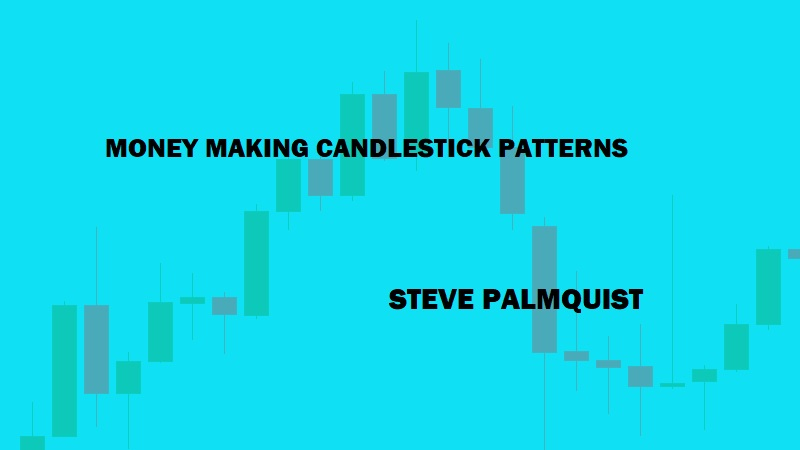Testing the Parameters in Morning Stars
Morning star pattern candlestick, Morning star pattern entry, Morning star pattern example, Morning star pattern bearish
Course: [ MONEY MAKING CANDLESTICK PATTERNS : Chapter 6: Morning Star Patterns ]

The Morning Star pattern is a bullish reversal pattern that occurs after a downward trend in the market. It consists of three candles - a long bearish candle, a small bullish candle, and a long bullish candle that opens above the previous candle's close.
A CLOSER EXAMINATION OF BODY SIZE
The tests above defined the “large body” of the pattern’s first day in terms
of the range of that day. Another way to define large is in terms of the
previous day or days. If the body on the first day of the pattern is required
to be larger than the body of the previous day’s candlestick, then we will see
results as shown in Figure 6.7 for the test
period between 01/ 03/06 and 05/01/07.
FIGURE 6.7: TEST RESULTS FOR MORNING STAR
WITH FIRST DAY BODY LARGER THAN PREVIOUS DAY’S BODY

Defining
the long black body for the first day of the three-day pattern to be larger
than the previous day’s body yields results that are significantly better than
the initial test results. Figure 6.7 indicates
that the annualized ROI moves from a fractional gain to more than 10% and the
percentage of winning trades also improves.
The
type of pattern found using this definition of large black body for the first
day of the pattern is illustrated in Figure 6.8, in
which QSII formed a morning star pattern on 07/28/06. QSII had been in a
downtrend, and then on 07/26/06 formed a black-bodied candlestick where the
body was larger than the body of the previous day. The next day the stock
gapped down and formed a small-bodied candlestick. On the third day the morning
star pattern completed when the stock moved up and closed well within the range
of the pattern’s first day.
FIGURE 6.8: LARGE FIRST DAY BODY MORNING STAR
IN QSII ON 07/28/06

When
we first looked at the morning star pattern, the definition of “large body” and “small
body” was not clearly defined. The test results have indicated that
defining the first day’s large body as being bigger then the previous day’s
body improves results, so we will incorporate that into the definition as we
examine other ambiguous parameters of the morning star pattern. As we go
through this process, we should end up with a more specific and improved
definition of the morning star pattern.
TESTING THE SECOND DAY PARAMETERS
The
second day of the morning star pattern has two parameters. It must have a small
body, either black or white, and it must gap down. The question arises as to
what does “small” mean? Our current
definition defines small in terms of a percentage of the day’s range. The
results of Figure 6.7 were obtained using
the original definition that required the body of the second day of the morning
star pattern to be less than half the day’s range.
Table 6.2 shows the results of testing
variations in the maximum percentage the second day’s body can be in relation
to the range of the second day. The fourth line shows the results for requiring
that the body on the second day of the pattern be less than 50% of the second
day’s range. This is the original definition and is the same as the results
shown in Figure 6.7. Requiring smaller body
sizes than this on the second day of the pattern reduces results.
TABLE 6.2 EFFECT OF SECOND DAY BODY SIZE ON
01/03/06 TO 05/01/07 TEST RESULTS
Based
on this information, I would change the morning star definition to require a
second day body size less than 60% of the day’s range, unless subsequent
testing showed a better alternative.
I
also looked at defining a small body on the second day of the morning star
pattern in terms of its relationship to the previous day’s body size instead of
the relationship to the second day’s range. After testing several different
percentage relationships, I did not find one that significantly improved
results. Based on these results, I modified the initial parameters noted above
to define the small body on the second day of the pattern as being less than
60% of the second day’s range.
EXAMINING GAPS
The
second parameter for the second day of the morning star pattern is the
requirement that the stock gap down. Gaps are a popular topic of conversation
among traders; there are lots of ideas and theories about trading gaps. There
are some gap trading strategies with promising results, but there is also a lot
of folklore that does not seem to pan out.
In
this case, the only requirement we have for day two of the morning star pattern
is that it gap down. Would the results change if we only looked at patterns in
which the close on day two was also below the previous day’s close, or if the
high of day two was lower than the close of the previous day? Once again
testing is the way to find out.
Test
results for morning star patterns during this test period that showed a close
on day two below the close of the first day of the pattern indicated a slight
increase in annualized ROI, but nothing dramatic or conclusive. Taking morning
star trades when the close of the second day of the pattern was below the low
of the first day of the pattern (the big black bar) was more interesting.
Figure 6.9 shows that during the 01/03/06 to
05/01/07 test period, adding a new requirement to the definition of the second
day of the pattern (that its close be below the low of the first day of the
pattern) improved the annualized ROI to more than 17%, which is more than the
buy and hold annualized ROI. The percentage of winning trades also improved to
nearly 57%. This is a requirement worth considering if further testing confirms
the results in other time frames.
FIGURE 6.9: TEST RESULTS FOR MORNING STARS
WITH SECOND DAY CLOSE BELOW THE FIRST DAY’S LOW

If
we only took trades that show the high on day two of the pattern to be less
than the low of the first day, we saw very interesting results, as shown in Figure 6.10. The annualized ROI jumped to more
than 52% and the percentage of winning trades dropped to just more than 48%.
The annualized ROI was high even with slightly less than a 50% winning trade
percentage because the average winning trade returned nearly twice what the
average losing trade lost.
FIGURE 6.10: TEST RESULTS FOR MORNING STARS
WITH SECOND DAY HIGH BELOW THE FIRST DAY’S LOW

Since
most traders focus on the annualized ROI number, let’s look closer at the
results of Figure 6.10. When examining test
results, the total number of trades produced during the test period is
important. A small number of trades may not be statistically valid or may be
caused by some unique event occurring during the test period. One way to
determine if this is the case is to test the pattern in a longer period to see
if similar results are produced. This leads to another issue: Some traders feel
the longer the test period, the more valid the results. This also has issues,
as we shall see.
Running
the test in a period more than twice as long, 01/02/04 to 05/01/07, resulted in
124 trades with an annualized ROI of nearly 41% (compared to 10% for buy and
hold) and 50% winning trades. This shows that even though the system does not
produce hundreds of trades, it does show interesting results in two different
time frames.
MONEY MAKING CANDLESTICK PATTERNS : Chapter 6: Morning Star Patterns : Tag: Candlestick Pattern Trading, Forex : Morning star pattern candlestick, Morning star pattern entry, Morning star pattern example, Morning star pattern bearish - Testing the Parameters in Morning Stars





